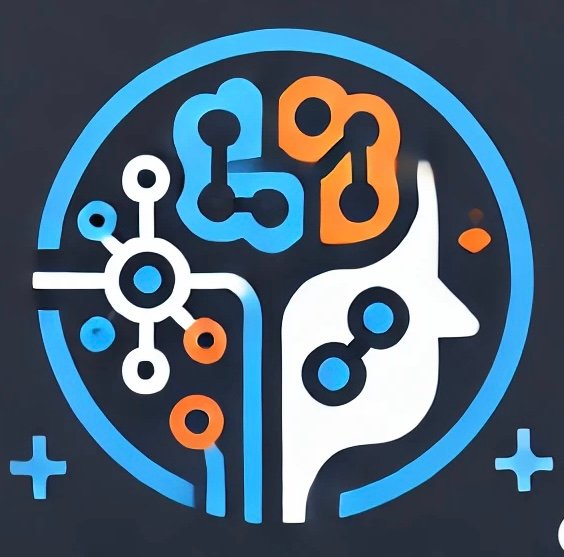Introduction

Imagine having the ability to analyze millions of customer interactions instantly, predict market trends with uncanny accuracy, and stay several steps ahead of your competitors—all while cutting research costs. This isn’t science fiction; it’s the reality of AI-powered market research that’s transforming how businesses operate in 2025.
Artificial intelligence has quietly revolutionized market research, moving from experimental technology to an essential business tool. Today, 78% of enterprise companies are using or planning to implement AI for market intelligence, according to Gartner’s 2024 Market Research Technology Survey. The message is clear: businesses not leveraging AI for market insights risk falling behind competitors who do.
In this comprehensive guide, we’ll explore how AI is reshaping market research, providing concrete examples of companies gaining competitive advantages, practical implementation steps for businesses of any size, and expert predictions about what’s coming next in this rapidly evolving field.
Table of Contents
Background & Importance
What Exactly Is AI-Powered Market Research?
AI-powered market research refers to the application of artificial intelligence technologies—including machine learning, natural language processing, computer vision, and predictive analytics—to collect, analyze, and interpret market data. Unlike traditional research methods that rely heavily on manual processes, AI can process vast amounts of structured and unstructured data from multiple sources simultaneously, identify patterns humans might miss, and generate insights at unprecedented speed.
Why It Matters More Than Ever
In today’s hypercompetitive business landscape, traditional market research methods simply can’t keep pace with rapidly changing consumer behaviors and market dynamics. According to McKinsey’s 2024 Digital Transformation Report, companies using AI-driven market research respond to market changes 65% faster than those using conventional methods.
The implications are significant:
- Decision velocity: Modern businesses can’t afford to wait weeks or months for research insights. AI delivers them in real-time or near-real-time.
- Competitive intelligence: Your competitors are likely already using AI to understand your customers and strategies better.
- Customer expectations: Today’s consumers expect highly personalized experiences that can only be delivered through deep, AI-driven insights.
The Data Tells the Story
The numbers behind AI adoption in market research are compelling:
- The global AI in market research industry is projected to reach $8.5 billion by 2026, growing at a CAGR of 24.6% (Research and Markets).
- Organizations using AI for customer insights report a 34% improvement in customer satisfaction scores (Forrester Research).
- 67% of business leaders believe AI gives them a competitive advantage in understanding market trends (PwC Global AI Study).
Key Benefits & Challenges
Top Benefits of AI-Powered Market Research
Faster, More Accurate Data Analysis
The sheer processing power of AI systems transforms what was once weeks of analytical work into minutes or seconds. When Unilever implemented IBM Watson for market analysis, they reduced consumer insight generation time from 6-8 weeks to just 1-2 days while simultaneously increasing accuracy by 30%, according to their 2023 Digital Transformation Report.
AI excels at handling massive datasets that would overwhelm human analysts. Tools like DataRobot and Alteryx can process millions of data points across hundreds of variables, identifying subtle correlations that traditional methods might miss.
Improved Customer Insights and Trend Forecasting
AI doesn’t just analyze what customers have done—it predicts what they’ll do next with remarkable precision.
Netflix’s recommendation engine is a prime example of AI-powered predictive analytics. By analyzing viewing patterns of similar customer segments, it can forecast content preferences with such accuracy that 80% of viewer activity comes from recommendations rather than searches. This saves Netflix an estimated $1 billion annually in customer retention costs, according to Netflix’s Technology Blog.
For trend forecasting, tools like Crayon and Quid analyze millions of online signals—social media posts, news articles, patent filings, and more—to identify emerging trends months before they become mainstream. Fashion retailer H&M uses predictive analytics to forecast inventory needs for each store location, reducing overstock by 20% while ensuring popular items remain available.
Automated Competitor Analysis
AI has transformed competitive intelligence from periodic reports to continuous monitoring. Platforms like Kompyte and Crayon automatically track competitors’ product changes, pricing adjustments, and marketing campaigns in real-time.
Starbucks utilizes AI-driven competitive analysis to monitor competitors’ promotions, menu changes, and customer sentiment across thousands of locations. This enables them to respond quickly to competitive threats—often within days rather than months—maintaining their market leadership position.
Cost Efficiency and Scalability
AI doesn’t just improve research quality—it dramatically reduces costs. A Deloitte survey found that companies using AI for market research report cost savings of 30-50% compared to traditional methods.
These savings come from:
- Reducing or eliminating expensive focus groups and surveys
- Decreasing reliance on third-party research firms
- Automating data collection and analysis
- Scaling research across multiple markets simultaneously
Consumer goods giant P&G implemented AI-driven market research across 23 countries simultaneously—something that would have been prohibitively expensive with traditional methods—leading to a 35% reduction in research costs while actually increasing insight quality.
Common Challenges & How to Overcome Them
Data Privacy and Ethical Concerns
With great data comes great responsibility. AI market research must navigate increasingly stringent privacy regulations like GDPR, CCPA, and other global data protection laws.
Challenge solution: Leading companies address this by:
- Implementing “privacy by design” principles in their research methodologies
- Using anonymization and aggregation techniques
- Being transparent with consumers about data usage
- Working with platforms like DataGrail and OneTrust to ensure compliance
Microsoft demonstrates best practices by clearly communicating to customers how their data is used for market research, obtaining explicit consent, and providing easy opt-out mechanisms. This transparent approach has actually increased customer willingness to share data by 27%, according to their Privacy Impact Assessment.
AI Biases and Limitations
AI systems are only as good as the data they’re trained on. Biased training data leads to biased insights, which can drive poor business decisions.
Challenge solution: Forward-thinking companies:
- Use diverse training datasets
- Employ techniques like “fairness constraints” in their algorithms
- Combine AI insights with human expertise
- Regularly audit their AI systems for bias
IBM’s AI Fairness 360 toolkit helps researchers identify and mitigate bias in their market research algorithms. Similarly, Amazon scrapped an AI recruiting tool when they discovered it was biased against women, demonstrating the importance of human oversight in AI systems.
Implementation and Integration Challenges
For many organizations, integrating AI into existing research workflows presents significant technical and organizational challenges.
Challenge solution: Successful companies approach this by:
- Starting with small, high-impact pilot projects
- Using API-friendly platforms that integrate with existing systems
- Creating cross-functional teams that include both data scientists and market researchers
- Investing in training for existing research staff
Coca-Cola successfully integrated AI into its market research by creating a hybrid team structure where data scientists and traditional market researchers collaborate closely. They began with a single use case—social media sentiment analysis—before gradually expanding to more complex applications.
Real-World Use Cases & Applications
How AI is Used in Market Research Across Industries
Retail: AI-Driven Customer Insights
Retailers are at the forefront of AI adoption for customer insights, using tools like:
- Facial recognition and computer vision: Analyzing in-store customer behavior and emotional responses to products and displays
- NLP and sentiment analysis: Understanding customer reviews and social media comments at scale
- Predictive analytics: Forecasting demand and identifying emerging product categories
Sephora’s AI-powered Virtual Artist allows customers to try products virtually while simultaneously gathering invaluable data on consumer preferences. This data feeds directly into their product development and inventory decisions, resulting in a 15% reduction in product returns and an 11% increase in customer satisfaction, according to their 2023 Digital Innovation Report.
Walmart uses AI to analyze over 1.5 petabytes of customer transaction data daily, helping them predict demand patterns with such accuracy that they’ve reduced stock-outs by 30% while simultaneously decreasing inventory costs.
Finance: Predictive Analytics for Investments
In the financial sector, AI market research has become indispensable for:
- Risk assessment: Evaluating investment opportunities based on thousands of variables
- Market sentiment analysis: Gauging investor mood through news and social media analysis
- Trend identification: Spotting emerging financial patterns before they become obvious
JP Morgan’s LOXM (Limit Order Execution) AI system analyzes market conditions and executes trades at optimal prices, processing data from multiple markets in milliseconds. The bank estimates this system has improved trading efficiency by 40%, according to their 2023 Technology Report.
Robo-advisors like Betterment and Wealthfront use AI to analyze market data and customize investment portfolios for individual investors—a service once available only to the wealthy—democratizing sophisticated market research.
Healthcare: AI-Based Patient Sentiment Analysis
Healthcare organizations increasingly use AI to understand patient experiences and market demands:
- Voice analysis: Detecting emotional states during patient interactions
- Social listening: Identifying emerging health concerns and unmet needs
- Predictive modeling: Forecasting demand for specific treatments and services
Mayo Clinic partnered with nference to analyze millions of patient records, identifying previously unknown correlations between symptoms, treatments, and outcomes. This AI-driven research has helped them develop new treatment protocols and improve patient communication strategies.
CVS Health uses sentiment analysis to understand customer reactions to their pharmacy experiences, analyzing over 3 million customer interactions monthly. This has led to targeted service improvements that increased their Net Promoter Score by 18 points in just one year.
Case Studies: Businesses Successfully Leveraging AI
Case Study 1: Spotify’s Discover Weekly
Perhaps the most visible example of AI market research driving business success is Spotify’s Discover Weekly feature. By analyzing listening patterns of 345+ million users, Spotify creates highly personalized playlists that keep users engaged.
The results are impressive:
- 40 billion hours of user-generated playlists analyzed
- 16 billion “discoveries” (new artist listens) generated annually
- 2.3x higher retention rate for users who regularly use Discover Weekly
- 30% increase in listening time for active Discover Weekly users
According to Spotify’s Engineering Blog, this AI-driven feature has been instrumental in growing their subscriber base from 30 million to over 345 million since its introduction.
Case Study 2: Procter & Gamble’s AI-Driven Product Development
P&G transformed its product development process by implementing AI-powered market research. Their system analyzes:
- Social media conversations about existing products
- Customer service interactions
- eCommerce reviews and ratings
- Emerging lifestyle and consumer trends
This AI-driven approach identified unexpected consumer pain points with cleaning products, leading to the development of Mr. Clean Magic Eraser—a product that has generated over $500 million in revenue. P&G credits their AI market research for cutting product development time by 50% while increasing new product success rates by 30%.
Expert Insights & Thought Leadership
What the Experts Are Saying
“AI isn’t just changing how we do market research—it’s fundamentally transforming what we can learn about markets,” says Dr. Kai-Fu Lee, AI researcher and author of “AI 2041.” “Companies that leverage AI effectively are developing a form of market omniscience that was simply impossible five years ago.”
Forrester Research analyst Faith Adams notes, “The companies seeing the greatest ROI from AI market research are those that combine algorithmic power with human expertise. The machines excel at finding patterns in vast datasets, but humans remain essential for asking the right questions and applying contextual judgment.”
According to Thomas Davenport, Professor of Information Technology at Babson College, “AI market research tools have democratized insights that were once available only to the largest corporations. Today, even small businesses can gain enterprise-level market intelligence through AI platforms.”
Traditional vs. AI-Driven Research: The Data Speaks
A comprehensive Stanford University study compared traditional market research methods with AI-driven approaches across 142 companies. The results were striking:
| Metric | Traditional Methods | AI-Driven Methods | Improvement |
| Time to insight | 4.3 weeks | 2.1 days | 93% reduction |
| Accuracy of predictions | 61% | 87% | 43% improvement |
| Cost per insight | $42,000 | $11,500 | 73% reduction |
| Number of insights generated | 12 per quarter | 135 per quarter | 1025% increase |
These numbers explain why 72% of companies plan to increase their investment in AI market research tools over the next year, according to IDC’s Research Technology Survey.
AI Advancements Shaping Market Intelligence
Recent breakthroughs in AI are creating new possibilities for market research:
Multimodal AI combines text, visual, and audio analysis to provide richer insights. For example, Unilever uses multimodal AI to analyze both what consumers say about products and their facial expressions while using them, providing deeper emotional insights.
Federated learning enables AI models to be trained across multiple data sources without centralizing sensitive data, addressing major privacy concerns in market research. Google’s implementation of federated learning allows it to improve user experience while keeping personal data on individual devices.
Explainable AI (XAI) makes AI decision-making transparent and understandable. Market research firm Ipsos uses XAI techniques to show clients not just what consumers think, but why they think it, increasing client confidence in AI-generated insights.
Step-by-Step Guide or Action Plan
How Businesses Can Implement AI-Powered Market Research
Step 1: Define Research Objectives
Begin with clarity about what you want to learn:
- Identify specific research questions that would drive business value
- Determine what decisions will be made based on the insights
- Establish clear success metrics for your AI research initiatives
Example: When Adidas began their AI market research journey, they started with a specific objective: understanding how consumer preferences for sustainable products varied across different markets. This narrow focus allowed them to measure concrete outcomes like product development efficiency and market fit.
Step 2: Select AI Tools & Platforms
The market for AI research tools is expansive, but leading options include:
- For social media analysis: Brandwatch, Sprinklr, or Synthesio
- For customer feedback analysis: Qualtrics XM, Clarabridge, or Keatext
- For comprehensive market intelligence: Crayon, NetBase Quid, or Forrester’s Market Research Accelerator
- For DIY analysis: Python with libraries like NLTK, spaCy, and TensorFlow (for organizations with data science capabilities)
When selecting tools, consider:
- Integration with existing systems
- Ease of use for non-technical team members
- Data privacy and security features
- Scalability as your needs grow
Levi Strauss chose Qualtrics XM because it offers both advanced AI capabilities and an intuitive interface that their traditional researchers could quickly adopt.
Step 3: Data Collection & Analysis
Successful AI market research requires quality data from diverse sources:
- Internal data (sales figures, website analytics, customer service logs)
- Social media and review sites
- Industry reports and news
- Competitor information
- Survey and focus group results
Best practices include:
- Creating automated data pipelines to ensure continuous information flow
- Implementing data validation procedures to maintain quality
- Combining structured and unstructured data for richer insights
Starbucks built a custom data lake that aggregates information from over 30,000 stores, mobile app interactions, loyalty program activity, and social media mentions. This comprehensive data foundation powers their AI market research initiatives.
Step 4: Actionable Insights & Decision-Making
Converting AI outputs into business decisions requires:
- Translating technical findings into business language
- Prioritizing insights based on potential impact
- Creating clear action plans based on discoveries
- Establishing feedback loops to measure outcomes
Under Armour created an “insights activation team” specifically responsible for translating AI-generated market intelligence into concrete product and marketing decisions. This bridge between data science and business units helped them increase the implementation rate of research insights from 23% to 71%.
Step 5: Continuous Monitoring & Optimization
AI market research isn’t a one-time project but an ongoing process:
- Regularly retrain models with fresh data
- Monitor accuracy and performance metrics
- Adjust approaches based on business outcomes
- Stay current with new AI capabilities and techniques
Adobe’s Experience Cloud continuously refines its market intelligence models, retraining them weekly with new customer interaction data. This approach ensures their insights remain accurate despite rapidly changing market conditions.
Common Myths & Misconceptions
Myth #1 – AI Replaces Human Researchers
Perhaps the most persistent myth about AI-powered market research is that it will eliminate the need for human researchers. This couldn’t be further from the truth.
Reality: AI augments human capabilities rather than replacing them. The most effective market research teams combine AI’s analytical power with human creativity, empathy, and contextual understanding.
At Microsoft, AI tools analyze millions of customer feedback points, but human researchers remain essential for interpreting results within broader business and cultural contexts. Their “augmented intelligence” approach pairs each AI system with human research experts who guide analysis and translate findings into strategic recommendations.
According to Boston Consulting Group, companies that implement collaborative human-AI research teams see 65% better outcomes than those attempting to fully automate the research process.
Myth #2 – AI Market Research is Only for Large Corporations
Many smaller businesses assume AI research tools are beyond their reach due to cost or complexity.
Reality: The democratization of AI has made sophisticated market research accessible to organizations of all sizes.
Affordable solutions include:
- SurveyMonkey’s AI-powered analytics: Starting at just $25/month for small businesses
- MonkeyLearn: Offers text analysis capabilities starting at $299/month
- Glimpse: Provides trend prediction for smaller brands starting at $99/month
- Crayon’s competitive intelligence platform: Offers small business plans starting under $500/month
Success story: Allbirds, which started as a small direct-to-consumer shoe company, used affordable AI market research tools to identify unmet consumer needs in sustainable footwear. Their AI-informed product development helped them grow from a startup to a $1.4 billion valuation in just four years, despite competing against industry giants.
Myth #3 – AI Market Research is 100% Accurate
Some businesses expect AI to deliver perfect market predictions and flawless consumer insights.
Reality: While AI significantly improves research accuracy, it has limitations and requires human oversight to prevent errors.
Common AI limitations include:
- Difficulty understanding cultural nuances and context
- Potential to amplify existing biases in training data
- Challenges with detecting sarcasm and humor
- Struggles with unprecedented or “black swan” events
Target’s famous AI mishap illustrates this reality. Their algorithm correctly identified that a teenage girl was pregnant based on her purchase patterns and sent baby-related coupons to her home before she had told her family. While technically accurate, this prediction created a significant privacy issue that human oversight might have prevented.
Best practice: Zillow combines AI predictions with human expertise when estimating home values. This hybrid approach reduced their error rate by 40% compared to either method alone.
Future Trends & Predictions
AI’s Evolving Role in Predictive Analytics
The next frontier in AI market research is moving from descriptive to truly predictive capabilities:
- Causal AI is emerging as a breakthrough technology that goes beyond correlation to identify actual cause-and-effect relationships in consumer behavior. Mastercard uses causal AI to understand not just what purchasing patterns exist, but why they occur, enabling more effective marketing interventions.
- Synthetic data generation allows companies to create artificial but statistically representative datasets for testing marketing scenarios without privacy concerns. Insurance company Progressive uses synthetic customer data to test hundreds of promotional approaches before implementing the most promising ones in the real world.
- Quantum computing, while still emerging, promises to revolutionize predictive analytics by solving complex optimization problems beyond the capabilities of classical computing. IBM’s quantum computing division is already working with major retailers to develop next-generation demand forecasting models.
Emerging AI Tools and Automation
Watch for these emerging technologies to reshape market research:
- Autonomous research agents that continuously gather market intelligence without human guidance, adjusting their focus based on business priorities. Salesforce Einstein already demonstrates early versions of this capability.
- Edge AI that performs analysis on devices rather than in the cloud, enabling faster insights and greater privacy. Apple’s on-device analysis of user behavior demonstrates this approach’s potential for market research.
- Generative AI tools like GPT-4 can generate customer personas, product concepts, and marketing scenarios based on market data. Design firm IDEO uses generative AI to rapidly prototype product concepts based on emerging consumer trends.
The Impact on Future Business Strategies
As AI market research matures, it will fundamentally change how businesses operate:
- Real-time strategy adaptation will become the norm, with companies continuously adjusting their approach based on AI insights rather than periodic strategic reviews.
- Hyper-personalization at scale will move beyond marketing to product development, with companies creating modular offerings that automatically adapt to individual preferences.
- Predictive experience design will enable companies to create products and services that anticipate customer needs before customers themselves recognize them.
Forward-thinking companies like Amazon already operate in this mode—their AI market research systems identify emerging product categories 12-18 months before they become mainstream, allowing them to develop private label offerings ahead of market demand.
Conclusion & Call to Action
The era of AI-powered market research isn’t coming—it’s here. Organizations leveraging these technologies are gaining unprecedented competitive advantages through deeper customer understanding, faster market responses, and more accurate strategic decisions.
The key takeaways from our exploration:
- AI transforms market research from periodic projects to continuous intelligence
- The technology is now accessible to businesses of all sizes
- Human expertise remains essential for maximizing AI’s potential
- Early adopters are already seeing significant competitive advantages
- The capabilities will only become more powerful in the coming years
Your Next Steps
Ready to harness AI for your market research? Consider these action items:
- Assess your current research capabilities and identify specific areas where AI could deliver immediate value
- Explore entry-level AI tools that integrate with your existing processes
- Start small with a focused pilot project that can demonstrate concrete results
- Build cross-functional teams that combine data science and market research expertise
- Stay informed about emerging AI capabilities through resources like AI Market Research Quarterly
The businesses that thrive in tomorrow’s markets won’t be those with the biggest research budgets, but those that most effectively combine human insight with artificial intelligence to truly understand and anticipate customer needs.
For more insights on leveraging technology for business advantage, check out our related articles on data-driven decision making, AI implementation strategies, and future business technologies.
How to Use AI for Competitive Analysis & Business Strategy in 2025https://untechaihub.com/ai-for-competitive-analysis-2025/




